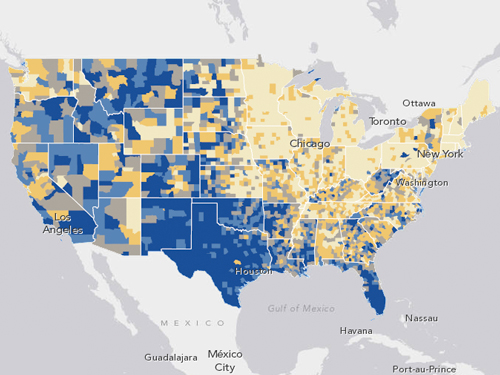Prognosis for GIS in Health Care Is Excellent
The medical profession is using geographic information systems to revamp staffing, medical care.
Topics
Competing With Data & Analytics
The most trite cliché in business is “location, location, location.” Yet even this overused phrase has gained new power through analytics. In fact, geography is beginning to look like a new kind of business destiny.
Geographic analytics is even pumping new life into a field where geographic analytics is venerable — health care. Back in 1854, John Snow used mapping to analyze a major London cholera outbreak, changing the course of public health.
The good Dr. Snow would probably be happy to see the way health care as an industry is embracing the use of geographic information systems (GIS). A recent conference in Cambridge, Massachusetts organized by Esri, a standard provider of GIS software and services, highlighted some work by the Louisiana Department of Health and Hospitals, which is using GIS to do fine-grained mapping of data to find health trends such as clusters of low-birthweight babies and disease outbreaks.
Those maps, or visualized data, can be used to help shape public health policy, much like John Snow’s did 160 years ago in London. Today’s software is far more sophisticated than Snow’s handmade maps, of course. But in many areas of health care, practitioners and institutions haven’t gotten all that far past Snow’s methodology. GIS tools are only now coming into their own for many kinds of uses in healthcare systems.
While Esri’s Bill Davenhall noted that the company has been working in health care for 17 years, Amy Sadler, a management and program analyst at the Veteran’s Administration office of informatics and analytics, says that when she goes to major Esri events, only a small percentage of attendees seem to work in health care.
That may be changing. Sadler says there’s great interest in GIS analytics at the VA, where she works with leaders at the regional, hospital and clinic level. “People are fascinated by it. They think GIS is the coolest thing,” Sadler said. “They want to integrate it into their practice, because they are able to see a big picture of how their system works.”
For instance, it’s one thing to know what percentage of patients in the 152-hospital VA system have diabetes.


Comment (1)
K Lee Lerner